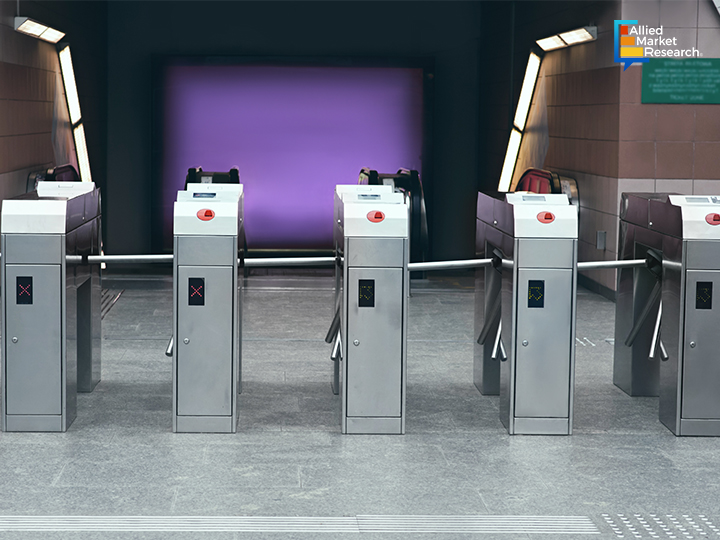The Role of Automated Fare Collection Systems in Promoting Cashless Payments

16 Jan
2025
The automated fare collection (AFC) system is a technology used to collect fares in public transportation. It makes fare payments faster, easier and cashless. These systems use smart cards, mobile payments, and contactless methods to process fares. Passengers are able to pay for their trip quickly, avoiding long queues. AFC systems are widely used in buses, trains, metros and other public transport networks.
Governments and transport authorities are adopting AFC systems to increase efficiency. These reduce human mistakes and conserve time. Passengers enjoy smooth and hassle-free travel experiences. AFC systems also provide precise data concerning the patterns in which the passengers travel. This way, the service providers improve their services.
The demand for AFC systems is witnessing growth owing to urbanization as well as the usage of public transport. Modern technologies, including the IoT, NFC, and mobile apps, make these systems better and faster. Thus, the rise in smart cities is expected to use AFC systems to bring development in public transport.
Mobile ticketing transforming automated fare collection systems
The growing use of smartphones for online ticketing has significantly boosted the automated fare collection industry. Standalone smartphone applications for bus and train travel simplify ticket purchases through cashless payments, quicker boarding and allow the use of preloaded cards for added convenience. Mobile ticketing reduces cash handling and accelerates boarding processes. For example, the Delhi Metro Rail Corporation (DMRC) integrated its mobile ticketing system with UPI-based payments, allowing humans to scan a QR code through apps like Paytm and PhonePe for quick and seamless entry. This initiative has drastically reduced physical ticketing queues and made travel more convenient. In India, advancements in UPI payment systems and e-wallet technology have further supported AFC system growth, with future innovations expected to drive expansion.
The automated fare collection (AFC) industry benefits from the increasing demand for cashless travel and card payments. These systems enable direct bank payments and smart card payments, eliminating the need for cash, streamlining transaction processes, and keeping data updated in real time. These features enhance payment efficiency, reduce wait times, and improve the travel experience for passengers. In addition, AFC systems offer self-service options, quicker transaction validation, and simpler fare collection, contributing to operational efficiency and aiding sector expansion.
Key developments in the automated fare collection system sector
The automated fare collection system market is highly competitive and continuously evolving. Leading companies are adopting key strategies such as forming partnerships, launching new products, engaging in mergers and acquisitions, and investing resources in research and development activities. These strategies are aimed at promoting growth and improving business operations across different geographical regions, assisting them to stay ahead of the competition. For instance, in October 2022, Masabi Ltd., a provider of fare payment services and Transloc, the firm that offers transit orchestration solutions, were selected by Eau Claire Transit in Wisconsin for a modern fare payment system. The joint effort provides an innovative, comprehensive account-based ticketing system that guarantees transparency, convenience, and accessibility for the passengers.
Conclusion
Automated fare collection systems have changed public transport by enabling cashless, quick, and convenient fare payments. With mobile ticketing and technologies like IoT and NFC, these systems create smoother travel experiences and enhance operational efficiency. As urbanization grows, there are profitable opportunities for expanding AFC systems, particularly in smart cities and public transportation networks.

Koyel Ghosh
Author’s Bio- Koyel Ghosh is a blogger with a strong passion and enjoys writing in miscellaneous domains, as she believes it lets her explore a wide variety of niches. She has an innate interest in creativity and enjoys experimenting with different writing styles. A writer who never stops imagining, she has been serving the corporate industry for the last five years.
Avenue: Entire Library membership of Allied Market Research Reports at your disposal
- Avenue is an innovative subscription-based online report database.
- Avail an online access to the entire library of syndicated reports on more than 2,000 niche industries and company profiles on more than 12,000 firms across 11 domains.
- A cost-effective model tailored for entrepreneurs, investors, and students & researchers at universities.
- Request customizations, suggest new reports, and avail analyst support as per your requirements.
- Get an access to the library of reports at any time from any device and anywhere.
Related Post
-
How are Submarine Cables Transforming Global Connectivity with Enhanced User Experience?
-
Endoscopy Procedures: Transformations in Techniques and Applications
-
AI-Powered Video Analytics: How the Product Actually Works for enterprises
-
Painting Robots: Transforming Precision Coating and Creative Applications
-
Innovations in Pharmacovigilance Systems Advancing Patient Safety
-
Understanding Edge Security: Keeping Data Safe Near the Source
-
Exploring the Use and Advancements of 3D Laser Scanners in Professional Applications
-
Reinforcing Industrial Controls with Smarter Tools and Training








